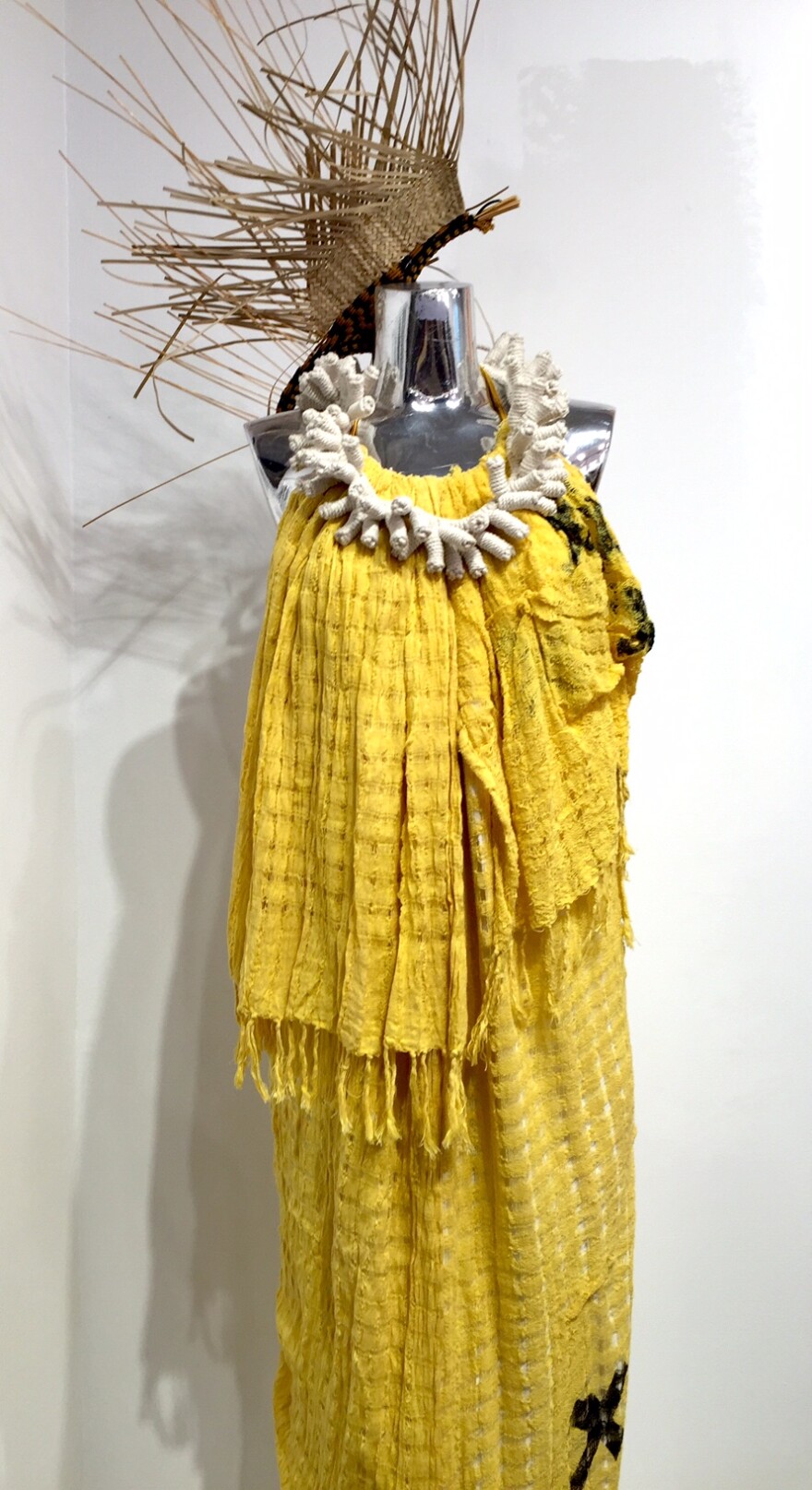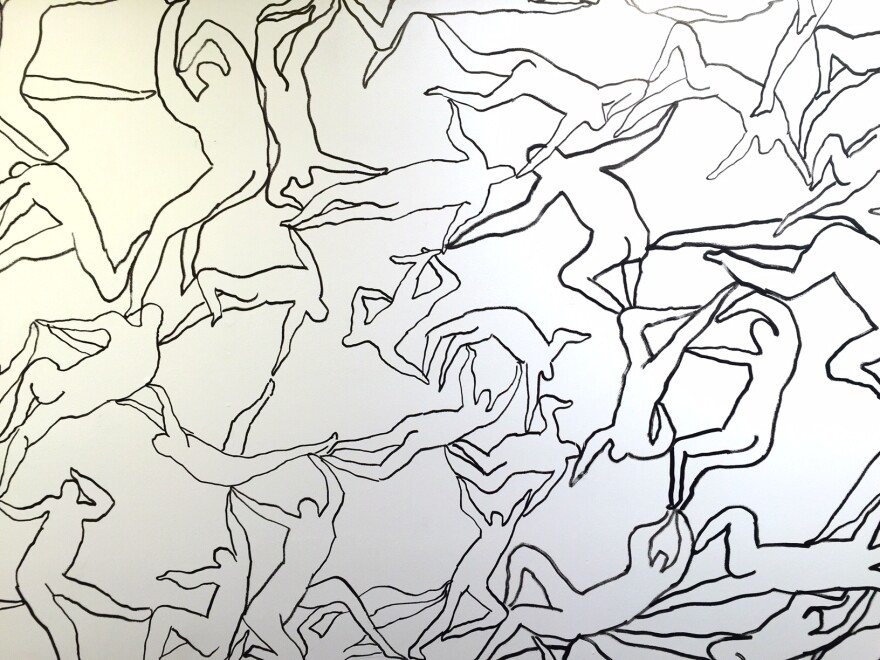In the run up through November, Fashion Month, Ala Moana Center is celebrating different facets of Hawai‘i’s fashion industry in a new pop up called the Fashion Annex. The current exhibition features a view of fashion that is both ancient and possibly futuristic. HPR’s Noe Tanigawa explores the idea of clothing that integrates understanding of culture, materials, and place.


“REBOOT: Fashion Futures“ with Solomon Enos and Marques Marzan continues through October 25th ,2016, at Ala Moana Center’s Fashion Annex, located on the mall level, mauka wing.
Artist Solomon Enos says clothing is about a lot more than fashion.
“It really is an opportunity to reboot our understanding of indigenous cultures around the world. We are wearing stories. Everything we wear has a genealogy to it. Our ancestors would say my grandmother made this hat, or my grandfather made this malo. Our ancestors put mana into the things they carried. When you understand the story of a thing, you understand where it came from, who made it, you have deep deep appreciation.”

Enos’ paintings and drawings here depict beings from the past, present and future in highly functional attire. Visually striking, Enos is trying to say more.
“Just think about the level of excellence! For example, lauoho, woven hair leis, each strand of hair carefully
woven. That is the kind of excellence we need to return to. It was made by people who knew who they were, where they were, why they were and we are trying to get back to that.”
“It all stems from a very rooted foundation. Connecting to a Hawaiian understanding of place as well as our connection to one another.”
Marques Hanalei Marzan is a cultural resource specialist at the Bishop Museum. He applies a comprehensive knowledge of Hawaiian customs and textiles to contemporary fashion. Concept, materials and production are aligned, for example in netting, where a single cord is knotted to form an interconnected series of shapes.
“Hawaiian perspective is what we make it today. Every culture grows, because if it stayed static, it would be a dead culture. We are making it relevant to our life and our needs of the present.”
Marzan believes all those connections can be made through clothing, and he looks like a perfect example of that himself.

Marzan is wearing a black collared shirt and black slacks, with a k?hei, or upper body cloak. This kihei involves cream colored felt in an open weave pattern, tied at his left shoulder and falling to his knees. A soft knotted cord in a fishnet pattern sweeps across his body. This is contemporary Hawai‘i.
Marzan has participated in the last eight Maoli Arts Month Wearable Art Shows, and pieces from those shows are presented here in fresh combinations by Ara Feducia. The works have progressed through themes over the years, for example, one year the idea of digging deep, exposing one's guts or na'au, led to pieces actually made of dried intestines. Materials, methods and process are consistent with concepts. Felting, for example is the process of combining and fusing varied materials into one pliant whole. Cord work, the act of wrapping and securing also feels like it has community implications.
Enos has also festooned the space with Keith Haring style figures, they tumble and link, leap and join up. There’s courage… and fun here. Enos says it’s not about copying products and images of the past.

“When we drink, let’s drink from the reservoir of magic and mystery that made these islands what they were. That’s what we’re trying to cut a path to and that’s what we’re seeing manifested here.”





